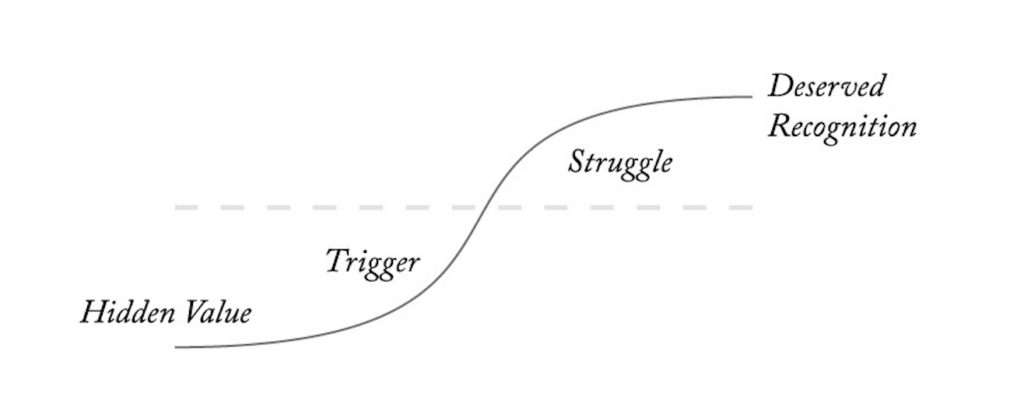This is the story behind Storyteller Tactics. It shows how a clueless young journalist became an expert storyteller.
But why should you trust someone who calls themselves an expert? Why should you trust me, a self-proclaimed Storytelling Expert?
I don’t have any letters after my name, I have no qualifications for this work.
But I do have a good story.
Watch this video.
I’ll explain the different tactics I used to write it, so you can come up with your own Expert Story. And then I’ll show you how one long story can be spun into many short stories.
First, let’s think about the structure of this story.
I’m using a Rags to Riches story arc, and it goes like this:

Beginning: 25 year old Steve is in a bad place. He’s so bad at pitching stories in the newsroom that he might lose his job. But, there’s something inside: Steve is curious about why some stories work and others don’t.
Middle: Steve is asked to work with a group of charities, helping them to tell better stories. He starts to read for the first time about the theories behind why stories work. It takes a long time, but…
End: Finally Steve has discovered what’s going on under the bonnet of storytelling, what makes some stories fly while others flop. Storyteller Tactics is just what 25 year old Steve needed.
Then look at the other tactics I used in this video
Movie Time: I took you right into the newsroom where I used to work, showing you the reactions that young Steve got when he pitched dull stories. There’s your Action and Emotion. And the Meaning? My expertise comes from mistakes I learned on the job.
Trust Me, I’m an Expert: By sharing my mistakes, rather than pretending I know everything, I build up my credibility. After all, nobody’s perfect – and if you pretend you are, you trigger our inner sceptic. Also I tell you that I love “lifting the lid” on stories so much that I spend hours every week talking to customers (unpaid, by the way). Finally, I’ve written the rules on this topic – a whole box of rules. This is why you should trust me.
Finally, spin out some mini stories
Once you’ve got your main story straight, you can start spinning out mini stories. Here are three mini stories that our social media editor Federico created, along with the tactic behind each mini story.
Three is the Magic Number: in this case, it’s a Goldilocks Three.
Five Ts: is about finding the Timeline then picking out the moment of maximum Tension. In my case, it’s the moment my boss says “I’m not really sure this is the right job for you.”
That’s Funny: In this case, isn’t it funny that none those talented journalists I worked with could answer a simple question: “Why is this a story but that isn’t?”


If you leave us your email, we'll let you know if we update this guide based on your feedback.